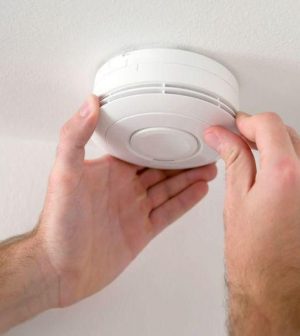- Skip Storing This Everyday Product in the Fridge Door
- Green Tea + B3 Pairing May Boost Brain Health
- Navigating Your Midlife Crisis: Embracing New Possibilities
- City Raccoons Showing Signs of Domestication
- Mapping the Exposome: Science Broadens Focus to Environmental Disease Triggers
- One Week Less on Social Media Linked to Better Mental Health
- Your Brain Changes in Stages as You Age, Study Finds
- Some Suicide Victims Show No Typical Warning Signs, Study Finds
- ByHeart Formula Faces Lawsuits After Babies Sickened With Botulism
- Switch to Vegan Diet Could Cut Your Greenhouse Gas Emissions in Half
Silent Killers: Space Heaters, Generators Bring Carbon Monoxide Danger

If you’re among the many people who use space heaters and generators during the winter, you need to guard against fire and carbon monoxide (CO) hazards, the U.S. Consumer Product Safety Commission (CPSC) says.
In the United States, that’s especially true for Black Americans, who have the highest rate of fire deaths — nearly twice the rate of the general population — and who account for 22% of portable generator-related CO deaths, nearly 170 from 2010 to 2020.
Space heaters are involved in about 1,700 fires in the United States each year that result in about 80 deaths and 160 injuries annually, according to the CPSC.
The safety experts advise that you should always plug space heaters directly into a wall outlet and never into a power strip, which can cause overloading that may spark a fire. Make sure to keep flammable materials at least three feet away from space heaters.
Space heaters may also pose a hyperthermia (overheating) hazard, particularly among children, people with disabilities and senior citizens, because of their limited ability to act or react to the elevated temperature.
Hyperthermia can result in death. Never leave space heaters running unattended in a confined space around infants or people with reduced physical, sensory or mental capabilities, the CPSC said in a news release.
Install smoke alarms on every level of the home and inside each bedroom. CO alarms should be placed on every level of the home outside sleeping areas. The experts recommend that you test the alarms every month to make sure they are working. Replace batteries at least once every year, or install smoke and CO alarms with sealed, 10-year batteries.
Have fireplace flues, chimneys, furnaces and other fuel-burning appliances inspected by a professional before each heating season, the CPSC advised.
Most CO deaths associated with portable generators occur in the colder months of the year, between November and February. The exhaust contains CO, which can cause death in minutes and is known as the silent killer.
From 2010 to 2020, more than 700 people in the United States died from CO poisoning associated with generators, with more than 50 such deaths in 2020, according to the CPSC.
Use portable generators outside only and place them at least 20 feet from the home. Never use a generator inside a home, basement, shed or garage.
If you have a power outage, use battery-powered flashlights or lanterns rather than candles to light your home. If you do use candles, never leave burning candles unattended.
More information
The U.S. Fire Administration has more on carbon monoxide safety.
SOURCE: U.S. Consumer Product Safety Commission, news release, Dec. 7, 2021
Source: HealthDay
Copyright © 2025 HealthDay. All rights reserved.










